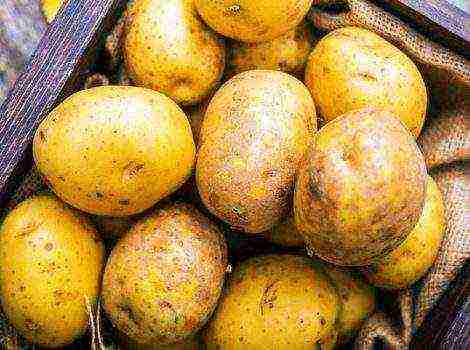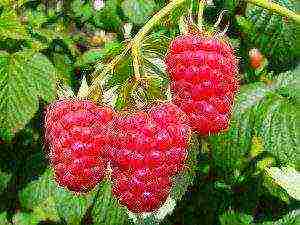Content
Summer residents and gardeners love to decorate their backyards with flowers. In many courtyards, you can see large flower beds and flower beds. Some people even create indescribable beauty from flowers, forming flower beds of continuous flowering. One of the main beauties is the rose. She is rightfully considered the queen of the flower world. It is she who, to a greater extent, is given special preference by both amateur gardeners and professionals. Therefore, many people want to choose the best varieties of roses. How to make the right choice and what should be considered?
The main criterion for the abundant flowering of the bush is the environment and soil characteristics. As many gardeners note, no matter which variety of roses is chosen, you can create a fertile soil for it yourself and concentrate the beds anywhere you want. Thus, the problem with the difference between the flowers you like and the soil conditions unsuitable for them is solved.
Roses with so-called complex colors are very demanding to the composition of the soil. The petals of such flowers have a combination of several shades. They can be very different and combine smooth or sharp transitions. Modern breeders have learned to breed amazing species of this plant, which have not only a complex coloring, but also an incredible shape. On unsuitable soil, such plants acquire a depressed state, an unsightly shape and a dull color. Their life cycle is significantly reduced.
Very often people choose David Austin roses. The varieties of these flowers are intended mainly for cultivation in partial shade and in loamy soils. Such conditions are typical for many other species. If we consider in general the soil conditions and the location of the flower bed, then these flowers love light breathing earth. It is categorically impossible to plant seedlings in clay, sandy and sandy loam soil, since it poorly permeates moisture and, practically, does not allow air exchange between the root system and the soil. Experts recommend, in this case, to carry out a double digging with the addition of chernozem, peat, sod land and well-rotted manure. In this case, the proportions should be kept approximately equal.
The best place to plant roses is on the southeast side of your patio, garden, or backyard. The place should not be dark, shaded by buildings, trees or ornamental shrubs.
As for the climate, then one should take into account the resistance of a particular type of plant to changeable weather conditions, to cold, heat and lack of air humidity. Are absolutely contraindicated for the colors of the place of north-western orientation at the summer cottage. Plants are very sensitive to drafts and cold winds, so roses will not grow well in such areas.
Classification of varieties of roses. What types are there and how to distinguish between them?
The opinions of many experts and florists boil down to the fact that before starting to grow these beautiful flowers, you need to find out as much information as possible about them in order to avoid mistakes. After all, in the end, every grower, regardless of qualifications, wants to get high-quality, fragrant and beautiful roses. Species and varieties are divided into several categories. In each of them, there are the best options that have proven themselves on the positive side in all respects.
The most beautiful and common types of roses are:
- Floribunda.
- Hybrid tea.
- Grandiflora.
- Groundcover.
- Climbing.
- Shrubs.
- Selected by David Austin.
When choosing a variety, you must take into account your preferences and tastes, then your favorite flowers will appear on your personal plot.
Floribunda roses. Varieties, photos, description
The history of these flowers began in 1924, when the Danish originator by the name of Poulsen first bred the original flowers of this type, which were called hybrid-polyanthus. At first, they belonged to the general category of tea roses, and were bred into a separate group in 1976. Some experts note that floribunda roses are intermediate varieties between the two types (hybrid tea and climbing). A distinctive feature of these colors is the diversity in everything. This is especially true for the combination of shades and tones. As a rule, they are rich, colorful, juicy.
General characteristics. The height of the bushes varies from 40 cm to 1.5 m, about 35 inflorescences can be collected on one stem. The flowers themselves have from 8 to 24 petals, the edges of which are distinguished by medium doubleness. In shape, some varieties resemble a narrow or wide glass, while others can bloom with flat or cupped buds.
The description of floribunda rose varieties also shows that their individual specimens can have golden clear shades, which are distinguished by a glossy surface and rigid petals. Such plants have an average height (about 1 meter). They are also characterized by larger flowers, which are collected in small inflorescences.
It should be noted that floribunda is a continuous flowering rose. They are also resistant to frost, fungal and viral diseases. This is an excellent solution for decorating your summer cottage or home yard.
The best floribunda roses, varieties with photos:
- Golden Vedding (Golden Wedding) German selection.
- Samba. Germany, selection W. Kordes.
- La-Paloma (La Paloma). Germany, breeding Tantau
- Lion-Rose. Germany, selection Kordes.
- Leonardo da Vinci. France, breeding Meilland.
- Tchaikovcki. France, breeding Meilland.
- Gebruder Grimm. Germany, selection Kordes.
- Pomponella. Germany, selection Kordes.
- Jubile du Prince de Monaco. France, breeding Meilland.
- Koncerto (Concerto). France, breeding Meilland.
- Purpl Tiger (Purple Tiger). France, breeding Meilland.
Hybrid tea roses: varieties, photos, description
This group has a very interesting history. Back in 1867, the Frenchman J.-B. André Guillot was engaged in the cultivation of flowers that were unique at that time. For years he experimented with La France, crossing remontant and tea roses. As a result, he created a wonderful plant that had many differences and its own unique zest. Then André Guillot positioned his brainchild as a variety of bourbon roses.
In the description of varieties of hybrid tea roses, their main feature is listed - the continuity of flowering. Also characteristic of these flowers are easily-cranked or straight stems, which have increased strength. They create erect, slightly spreading shoots. The varieties of hybrid tea roses were classified into a separate group in 1997.
The bushes are characterized by low shoots. Their length is a little less than a meter, they have large racemes with 4-7 leaves. Most often, flowers are collected in small inflorescences of 4-6 pcs. The shades are very different (in some varieties, several colors can be combined). There are new varieties of hybrid tea roses that have complex large double flowers.
Almost all varieties of hybrid tea roses have a beautiful appearance and are perfect for decorating not only a summer cottage, but also premises. The average period of initial, active flowering lasts about a month. Then comes the time to move to the next stage - the emergence of new flowers (15 days for early varieties and 30 days for later). Then they bloom continuously until the first frost.
The best varieties of hybrid tea roses:
Medium-sized varieties:
Red-pink varieties:
Rose varieties of the Grandiflora group
A relatively new type of flowers, developed for decorating gardens.They look like a low-growing tree, about 1.5-2 m high. This group of flowers was obtained by crossing floribunda and hybrid tea varieties. Grandiflora embodies the best qualities of these varieties. They have a very attractive appearance and have a wonderful aroma. Notable properties are resistance to disease and frost.
The best varieties of Grandiflora roses:
Ground cover roses: varieties, photos, description
The name of this group contains the main answer to the question about the main characteristics of the plant. Groundcover - low-growing roses that are able to cover a vast area of the flower bed with long shoots with many flowers blooming on them. The length of the shoot can at times reach up to 4 meters. Thus, nature creates a natural, beautiful carpet.
There are also ground cover roses, varieties of which, in addition to creeping on the ground, shoot drooping shoots. This type of growth provides an indescribable beauty to the bushes. Some species bloom once a year (they are rarely used by summer residents). It is the continuously flowering varieties of ground cover roses that are very popular.
Roses also have ground cover varieties (see photo), which are characterized by a variety of shades (light pink or pale crimson, red and dark red, light red or pure white). The buds have a variety of sizes.
Another feature of these flowers is frost resistance. Many varieties do not shed their foliage until spring. They are good for decorating columns or walls in the yard. Despite this, the base of the plants should be covered for the winter.
Ground cover roses, winter-hardy varieties (photo):
Roses shrabs: varieties, photos
Speaking about this group of flowers, one can note their main feature - a magnificent aroma, neat, upright bushes, abundant and continuous flowering. Flowers can be of various shapes (there are small ones, and there are large ones, the diameter of which reaches 12 cm). Petals are double, semi-double or simple. The leaves do not have a glazed surface; they can be dark green with a burgundy tint.
It should be noted that shrub roses were introduced into a separate group in 1954. It was then that many very beautiful species of this plant appeared.
Due to its structure and powerful root system, the formation of a bush is very easy, the main thing is to cut it on time. For example, flower growers very often form a ball, cone or strict square. This is not difficult to do. Some summer residents use this plant to form a decorative hedge to highlight one or another area of the personal plot.
Roses are grown shrabs (see varieties with photos) summer residents, both in separate flower beds, and in combination with other types of flowers. They are often used in the planning of gardens or parks, which is why shraba roses are called landscape or park roses.
There are three groups of scrub (park) roses:
- Curly - the length of the shoots is from 5 to 16 m.
- Climbing - the length of the shoots is up to 6 m.
- Semi-plaited - the length of the zero shoot reaches a little more than 3 m.
Erect bushes can reach heights of up to one and a half meters. Among the advantageous properties is frost resistance (especially Canadian park roses, the varieties of which can withstand a temperature drop of up to 350 C of frost). They bloom all summer until late autumn continuously, delighting the eye with their indescribable beauty and aroma.
The best varieties of scrub roses:
Roses bred by David Austin
The origin of this group of flowers is very interesting. An English breeder named David Austin began breeding completely new types of roses. He experimented for a long time, crossing classic floribunda and tea hybrid with varieties of long-forgotten old French and Damascus roses, which had already lost their popularity and demand among gardeners and summer residents.
As a result of his hard work, flowers of a completely new format were obtained, which began to be called Austin roses.The varieties he bred have very attractive shapes, with intricate petals and the structure of the bud itself. They are also characterized by new aromas. Many experts compare the smells of these flowers with the aromas of expensive, natural and real teas.
The best varieties of Austin roses are very beautiful and are often grown for the trade. Despite the variety of forms of shoots, bushes and the abundance of flowering, the presentation of all varieties of rose leaves is not lost.
The work done by the English breeder has a great price. For example, breeding a single resistant variety requires 4 to 8 years of diligent attention and careful approach. Austin devoted his whole life to this business, which is more than 60 years. From a very young age, he started a business that brought him the most pleasure. The nursery he created, which is located in Shropshire, is still engaged in breeding new types of Austin roses. The catalog of varieties with photos is constantly updated with new types of these flowers, which have incredible beauty and advantageous properties.
It should be noted that the climatic location of Shropshire (western part of England) contributes to the endowment of Austin flowers with unique properties - resistance to severe weather conditions and diseases.
Austin roses, photo varieties:
Climbing roses: continuously flowering varieties
According to the description and characteristics, the budding and flowering phases of these beautiful plants are very extended. Shoot formation occurs constantly. This property contributes to the continuity of flowering. This period can last up to six months without interruption. Paying attention to this feature, many designers and flower growers use them to decorate complex and simple building elements of their homes and courtyards. The best, in this regard, are Climings or Banks.
Also, varieties of climbing roses that grow all summer can be divided into three groups according to the nature of their growth:
- Curly. The length of the shoots is up to 15 m.
- Climbing. Shoot length up to 5 m.
- Semi-plaited. The length of the branches does not exceed 3 m.
This classification is not accidental. The fact is that claimings bloom on young shoots, and ramblers use branches from past years. The approach to plant breeding and the formation of a beautiful, climbing bush depends on this nuance.
The most beautiful varieties of climbing roses:
This article provides a description and photo of the most popular, beautiful, fragrant and original varieties of roses. Therefore, flower growers and summer residents have a good opportunity to purchase those flowers that best suit his tastes and requirements.
Any festive event is rarely complete without flowers. They are used to decorate premises, decorate streets and courtyards. Of course, the first place among the wide range of cut crops is the rose. Many women love these flowers for their indescribable beauty, aroma, variety of shapes and colors. What are the most beautiful among them? Rose varieties that can be attributed to this category are not only sold in flower shops, but also grown by experienced summer residents.
It is very difficult to choose the most beautiful among the wide assortment of popular roses. The experience of many gardeners and florists, as well as summer residents, will help you decide on which types of beautiful roses you should focus your attention.
Among the many varieties, there are those that are classified by many summer residents, flower growers and amateurs in the category of whimsical crops. These include:
- Rose de Resht. This is the so-called Portland variety, the characteristic feature of which is a persistent, heady aroma, which is emitted by large flowers of an unusual shape. Some gardeners and lovers position Rose de Resht as exotic roses for this very reason. The first mentions of these flowers were recorded in the 17th century in Iran. (Resht is the name of one of the Iranian cities). Experts note that it was from this corner of the planet that Rose de Resht came to Europe. A feature of the culture is the continuity of flowering.In place of the cut flower, a new one immediately appears. Thus, it belongs to the beautiful varieties of roses that bloom all summer.
- Golden Showers. Very beautiful roses, despite the promising name, which gives the characteristic of the shape of the bush (thin stems hanging above the soil surface), the flowers bloom only once a year and the flowering period lasts no more than 7 days. The petals seem to be covered with a velvet blanket, and the plant itself is gaining strength. At the end of flowering, the stems do not fade, continuing to grow until frost. During this period, you can form a bush.
- Vendela. A finicky variety of roses. It is susceptible to fungal infections. The Vendela rose seedling must be very well protected against harmful microorganisms. This plant requires careful care and special attention from the grower. It is necessary to especially monitor the balance of moisture, since transfusion can provoke the development of fungal diseases. Therefore, many summer residents spend a lot of time growing these flowers at home. But the result is worth it.
- Eiffel Tower. This variety of beautiful roses also requires a lot of attention, because of this, novice growers spend a lot of time. It is recommended to grow them under cover when the temperature fluctuates rapidly. According to reviews, Eiffel Tower is very beautiful, has a heady aroma, which is emitted by flowers of a delicate crystal-pink hue.
- Bleu Magenta. Very rare but beautiful roses (see photo). This forces many growers to take up the cultivation of Bleu Magenta. The flowers have a deep purple-purple hue. The plant belongs to undersized, reaches about half a meter in height. On the dense clusters of one bush, you can count up to 25 flowers. The flowering period lasts about a month. The leaves are very small with a glossy, shiny surface. Shoots have almost no thorns. The plant is very demanding of itself.
Beautiful roses of the Topalovich brothers
In all corners of the world, with great diligence, many growers are engaged in the cultivation of scrub roses. The word "shrab" in translation from English means "bush". Therefore, it is not difficult to guess what it is about. Shrub roses are very popular as they are grown commercially. But in many summer cottages, you can see shrub roses that adorn flower beds and flower beds.
In Serbia, there is a very popular and one of the best nurseries in Europe, which grows beautiful varieties of roses (see photo), and it is named after the Topalovic brothers. Its history begins in 1931. Despite many difficulties, primitiveness has been preserved in it, which is now combined with innovative approaches to breeding beautiful species of roses. As a result of their activities, many exotic varieties have been bred. The nursery "Brothers Topalovich" for the entire period of its breeding activity has received many awards and recognition in many countries of the world.
A distinctive feature of the nursery roses is the combination of the classic waviness of double petals with large flowers, the diameter of which is not less than 10 cm. They are also characterized by bright colors of buds, strong stems, splendor of bush forms.
Many experts note good resistance to cold weather and absolute immunity to some pests (aphids, locusts).
What is the most beautiful variety of roses? The most popular are:
Despite the many advantages, these roses require careful, painstaking and attentive care.
Beautiful roses by David Austin
The famous breeder from England David Austin experimented for many years to create the unusual beauty of roses. In his numerous studies, he used several types of plants (bourbon, floribunda, tea and some varieties of French roses). In his deepest dreams, the goal was to combine modern colors and continuous flowering without losing the classic beauty inherent in roses. And this dream became a reality, which made it possible to position his varieties in a separate group - Austin roses (Ostinki).The colors are dominated by shades of peach, red, apricot, yellow.
The ostins have very beautiful, compact, powerful bushes, on which abundantly flowering large-flowered inflorescences are located. The diameter of each bud reaches about 13 cm. The petals are double and do not fade in the sun, delighting people for a long time with their indescribable beauty.
The most beautiful varieties of roses (see photo), bred by David Austin, bloom in waves, but the break between these periods is small (about 14 days). The height of each bush reaches a meter in height. This makes them very attractive.
Beautiful varieties of roses (photo with names):
Austin's most fragrant roses:
The most beautiful varieties of roses with abundant flowering:
The most beautiful roses (photo) with two-tone, saturated shades:
There are also varieties of beautiful roses that can form flowers on the same shoots for up to 3 years:

What varieties of roses grow on your site? Which ones would you like to try to grow? The variety of roses existing today is so huge that even with a strong desire, life will not be enough to experiment with all known varieties. Therefore, flower growers so carefully choose the types of roses and individual varieties worthy of taking a place among other plants in the flower garden.
Types and varieties of roses ideal for the Russian climate
But the complexity of the choice lies not only in the fact that the eyes run up from the presented assortment - not every variety of roses can be grown due to the peculiarities of the local climate. Nevertheless, in most of the territory of Russia, the summer is very short, and the winter is frosty, which is why delicate roses do not gain color or even freeze out. Let's look at varieties that have long been successfully grown in domestic gardens.
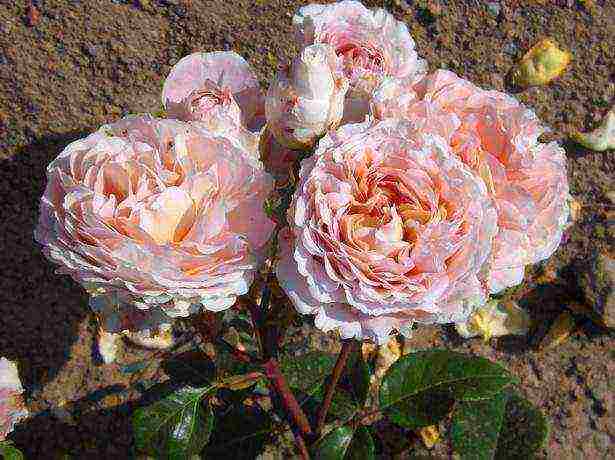
For open ground, choose those varieties that are least susceptible to damage in winter.
As good as the Dutch roses, presented in every flower shop in the form of luxurious bouquets and elegant single flowers, are very difficult to grow them in our climate. Their delicate root system is not able to withstand severe frosts, and in general Dutch roses are very capricious - at best, you can achieve success by growing these roses in a greenhouse or at home in pots, surrounding the flowers with maximum attention and care.
Video about varieties of roses
For open ground, choose the varieties that are least prone to damage in winter. For example, park roses and rose hips (wild rose) are considered the most resistant to frost. The best frost-resistant varieties include such a variety as the Cordes roses.
Winter hardy roses native to snowy Canada
Not only our country is famous for long snowy winters and strong frosts - Canada is located in similar latitudes, and local gardeners have the same problems with growing roses. But it was the Canadian breeders who came to grips with breeding winter-hardy roses, starting their work at the end of the 19th century. Since then, Canadian scientists have achieved excellent results, and Canadian roses have become famous all over the world for their unique qualities. These flowers are able to withstand frosts down to -40 degrees, are not afraid of diseases and even in adverse conditions grow abundantly and continuously.
Officially, only the Explorer and Parkland groups belong to Canadian roses, however, flower shops often sell American-bred varieties and old frost-resistant wrinkled roses in the guise of Canadian roses. The winter hardiness of the Explorer and Parkland varieties is different - some roses are well able to withstand our winters, while others freeze to the level of snow, but then recover and bloom well in summer. Even with the complete freezing of the aerial part, Canadian roses grow again from the buds on the roots.
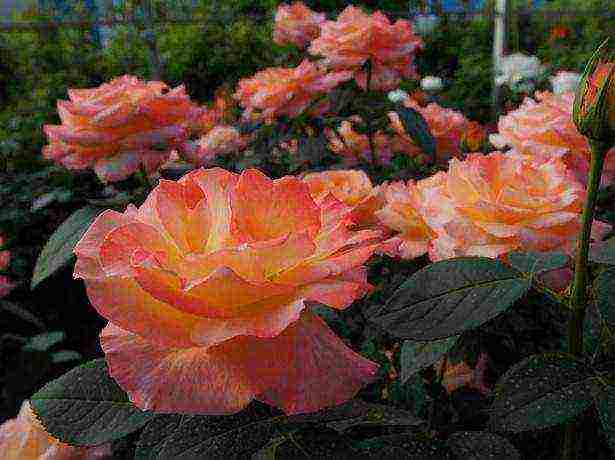
Even with the complete freezing of the aerial part, Canadian roses grow again from the buds on the roots.
The best winter-hardy varieties of the Explorer series: John Cabot, Alexander MacKenzie, Lambert Closse, Marie-Victorin, Louis Jolliet, Quadra.In a series of "Canadians" Parkland, varieties are distinguished by special winter hardiness: Winnipeg Parks, Hope for Humanity, Cuthbert Grant, Morden Ruby.
A beautiful and unpretentious "coastal flower" - Rugosa rose
What florist does not dream of roses that are ideal in every respect - beautiful, blooming all season, with a pleasant aroma, that do not need shelter for the winter and special care, that can grow well in partial shade, on salty soil and even on sand? There is such a rose, it came to us from the Far East, where it has earned the poetic name "coastal flower" due to the fact that it is often found on the coast. In Russia, it is better known as wrinkled rose or rugosa.
Wrinkled rose bushes are ideal for creating a flowering hedge - the plant forms dense thickets in the shortest possible time due to root suckers, while the bushes are abundantly dotted with sharp thorns. The first wave of flowers appears earlier than in other varieties of roses, and throughout the summer, new flowers continue to form, and by autumn, beautiful fruits of bright orange color ripen. Not surprisingly, the wrinkled rose is considered one of the best varieties to grow in our climate.
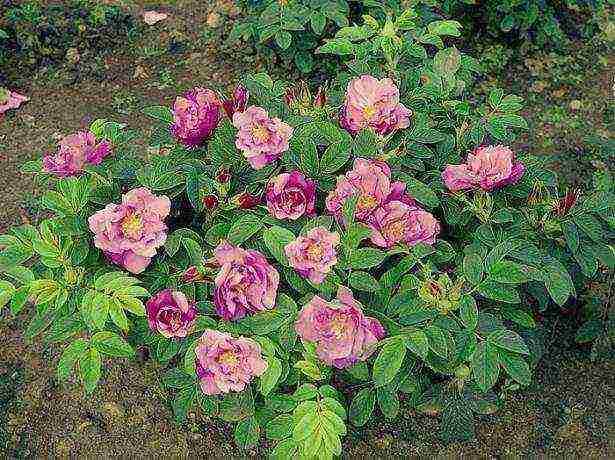
Wrinkled rose bushes are ideal for creating a flowering hedge
Recommended varieties of Rugosa rose:
- Grootendorst series (pale pink flowers Pink, pure white White and dark crimson Supreme);
- Frau Dagmar Harlopp - blooms on salmon-pink flowers on any soil, surprisingly unpretentious;
- Rugosa Alba is a popular variety with purple-red, non-double flowers;
- Sarah Van Fleet with very fragrant pale pink double flowers;
- Roseraie de I’Hay with wine-red double flowers is very hardy and unpretentious;
- The Queen of the North is the hardiest red-flowered variety suitable for fairly cold regions.
Other varieties of roses adapted for Russian winters 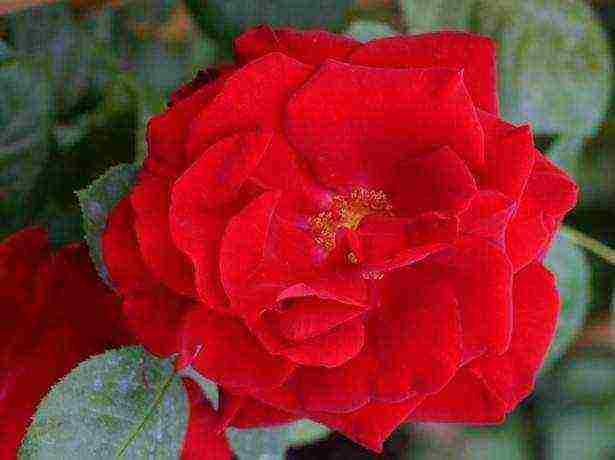
Rose Santana
Among the most popular winter-hardy varieties in our country, a special place is occupied by climbing rose santanabelonging to the Climber group. Of the red roses, velvety bright red Santana is considered one of the most beautiful. Large semi-double flowers with slightly wavy petals abundantly cover vigorous dense bushes throughout the summer season until the first frost. The height of the bush can reach two and a half meters, and in some cases grows up to four meters. You can grow the Santana rose as a shrub or as a climbing plant. The variety is quite resistant to common diseases and is not afraid of rain.
Another notable variety from the climbing group is New dawn... These roses are planted in groups or singles in a flower garden, and are also used for vertical gardening. On the bushes of the New Dawn variety, charming pale pink double roses with a diameter of up to seven centimeters are formed. The flowers are collected in inflorescences and exude a wonderful apple aroma. Flowering lasts from mid-June to mid-October. One of the best autumn varieties of roses, even in severe winter frosts, its apical shoots only slightly freeze.
The unpretentious frost-resistant variety of hybrid tea rose is highly valued throughout Europe. Madame Meilland (Meiland), which has different names in different countries: Fredsrosen, Gloria Dei, Mme Antoine Meilland, Peace, Beke, Gioia. Roses look very elegant at any stage of flowering - from elegant creamy buds to lush blossoming flowers with a pink border, exuding a pleasant fragrance. The aroma of roses and the color of the flowers largely depend on the place of cultivation.
Video about varieties and selection of roses
From the group of grandiflora roses, it is worth noting the variety Quin elizabeth with cupped large double flowers of traditional pale pink color. Flowers, reaching a diameter of twelve centimeters, are located on the bushes singly or in the form of inflorescences. Flowering lasts from June to October with short breaks.In addition to its high winter hardiness, the variety is resistant to fungal diseases.
Novice growers can start growing roses by growing popular floribunda varieties. Abundantly blooming floribunda roses are less whimsical than hybrid tea, they are more resistant to frost and fungal diseases, they are ideal for a small area. Common varieties: Masquerade (dark red, yellow, pink flower color), Amber Queen (amber color), Allgold (golden yellow variety, very easy to grow), Chanelle (reliable variety with peach-colored roses), City of London (bright pink), Korresia (with very fragrant golden flowers that are not afraid of rain), Parfait (creamy pink roses for universal use).
Englishwomen in Russian gardens
Restrainedly elegant with a refined aroma, David Austin's English roses are known throughout Europe. Many of the breeder's varieties have received high-level awards. Bred in the temperate climate of Great Britain, Austin roses quickly adapted in Russia and thrive in the Moscow region. And in more favorable conditions in the south of the country, thorny beauties demonstrate increased strength of growth, climbing the walls of houses and gazebos.
Not all Austin varieties are recommended for Russia, but those that are approved for sale show high winter hardiness and endurance. They are undergoing variety testing in experimental plots in the USA and Scandinavia.
Austin rose varieties have the following common characteristics:
- versatility and sophistication of aromas from myrrh to polysyllabic fruity;
- specific cup-shaped bud;
- the predominance of peach, pale pink, white and yellowish shades - according to D. Austin, forms with a red color of flowers show less endurance and it is more difficult to get a good strong red hybrid;
- repeated or continuous flowering;
- have "star" names and reflect the cultural history of England;
- are distinguished by their unpretentiousness and high vitality;
- large and heavy flowers often droop on thin shoots.
All Austin roses are beautiful. But we tried to include in our rating those varieties of English roses that (according to gardeners' reviews) showed themselves best in difficult domestic climatic conditions.
|
Lady of Shalott 1,700 (seedling from D. Austin nursery in a branded package) Austin's best rose for beginner growers. The variety is striking in frost resistance, endurance and disease resistance. Unblown buds are bright orange in color. Flowers 8-10 cm in diameter, double, cupped, salmon-colored with a golden glimpse. 1 to 3 flowers are laid on one stem. Fruit-tea aroma with notes of apple and clove, well expressed. Flowering is constant, without interruption. The rose blooms well even in cold and rainy summers. The flower lasts 5 - 10 days, and by the end of its flowering a new shoot with a bud grows from the axillary bud. With proper planting and good care, it blooms in the first year. In the first year, flowers can be single and smaller in diameter, the bush is gaining strength by the 3rd season. The bush is vigorous, highly branched, with flowing shoots. The size of the bush in height and width is about 1 m, but in the south the bush can grow up to 2 m. It is successfully grown in the Moscow region and Western Siberia. Hibernates under a lutrasil shelter. In the heat, it experiences stress, the flowers fade faster. Main pluses:
Minuses:
|
 9.9 / 10 Rating Reviews It blooms and grows very actively. The three-year-old bush amazes with its endurance. I love this Ostinka for its nostalgic shape and original color of the flower.
|
|
Golden Celebration 590 (2-year-old seedling in a bag with wet peat mixture) The variety is notable for its large, densely double copper-yellow flowers up to 16 cm in diameter.Bright yellow petals with small pink specks. Cupped shape with bent rounded petals. A sophisticated combination of an old form with a modern original color. Pronounced sweet-fruity aroma. On one shoot from 3 - 5 to 10 flowers. Flowers fade in 5-6 days, but fly around faster in hot weather. In a temperate climate, the height of the bush does not exceed 1.5 m, but in the south of Russia Golden Celebration can be grown as a climbing rose. The arcuate shoots of the ostinka droop under the weight of the flowers, there are not many thorns. The winter hardiness of the variety is average, grown with shelter. Good resistance to diseases, but with a massive spread of the pathogen in the region, preventive treatments are carried out. Main pluses:
Minuses:
|
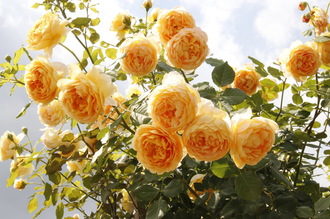 9.7 / 10 Rating Reviews My favorite Austin rose, I think - the best English rose. The flowers do not last long, but the flowering is so abundant that the bush is always strewn with flowers. Under the large flowers, the shoots, of course, droop, but this is rather a feature of the ostins.
|
|
Graham Thomas 890 (seedling in a container) One of the best representatives of yellow English roses. Flowers up to 10 cm in diameter, warm rich yellow, pale in the sun, convexly cupped, peony-shaped, double (up to 75 petals), with a strong sweetish tea aroma. On one shoot, from 3 to 5 flowers are laid. The flower lasts up to 5 days, in hot weather it flies around faster (in 1 - 3 days). In temperate climates, the bush reaches 1.5 m, and in hot climates, it is grown as a climbing rose, launching 3-meter shoots along the support. To form a dense shrub, the shoots are cut off after the first flowering, provoking abundant branching. If the bush is not disturbed, the shoots will stretch along the support. Shows average winter hardiness and good disease resistance, preventive treatments are required. Good results were noted in the Volga region. Main pluses:
Minuses:
|
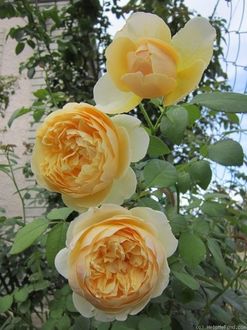 9.5 / 10 Rating Reviews The first year you need to give the seedling to gain strength and then it will delight you with good flowering. My rose grows in partial shade, and the flowers are brighter in color.
|
|
Molineux 350 (seedling with an open root system in a bag with a wet substrate) The variety stands out from other achievements of D. Austin in appearance. The bush is upright, not drooping, with a narrow crown. If other ostinki are ideal in single plantings, then Molyneux is recommended to be planted only in groups. The declared height of the bush is about 0.65 m, although in the southern regions the "baby" can reach 2 m. Flowers are densely double (up to 120 petals), 6 - 8 cm in diameter, in the form of a cupped rosette, collected in racemose inflorescences of 3 - 5 pcs. The color of only blossoming flowers is golden with an apricot tint, and under the sun it fades to lemon and cream at the edges. Blooms all season. Since there are flowers of different ages with a changing color at the same time, the bush effectively shimmers with shades of yellow. Flowers fly around quickly, but the bush always remains in bloom. There is a delicate aroma of tea roses with musky notes. According to frost resistance, the variety belongs to zones 5 and 6. In the suburbs, it requires shelter. In cool climates, it forms larger flowers, and in hot climates, the color is revealed brighter. Main pluses:
Minuses:
|
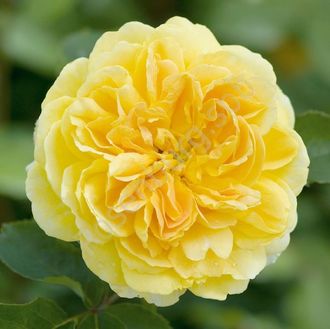 9.5 / 10 Rating Reviews Expressive and harmonious English rose. Constantly surprises with a variety of shades. She is not capricious in her care, with good health.
|
|
Mayflower (The Mayflower) 1,190 (3-year-old seedling in a container) The variety is fully consistent with a typical English rose. Buds appear earlier than other varieties, and flowering lasts until late autumn, without losing abundance. The flowers are rosette-shaped, strongly double (75 - 90 petals), small, 6 - 8 cm in diameter, even pink in color, with the classic scent of rose oil, the petals are slightly bent down. The flower lasts 7 or more days. The bush is lush, but compact, it grows gradually. Shoots are densely covered with small leathery leaves, there are very few thorns. In landscape design, it is used for planting in the foreground. Has excellent winter hardiness, feels better in cool climates. Main pluses:
Minuses:
|
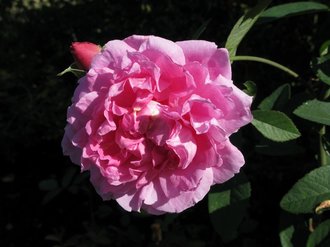 9.3 / 10 Rating Reviews Delicate, but at the same time very healthy rosette. In the first years, it gives a very small increase, but in the future a dense bush is formed.
|
Austin roses are predominantly bushy and spreading. They amaze with stamina and natural grace. English roses are good both as tapeworms and in group plantings. Delicate calm shades allow you to easily combine all Austin varieties in one flower bed, while maintaining the harmony and sophistication of the garden. They were created for gardens in a natural, natural style.
Of course, our rating is far from complete. Each rose grower has its own favorites, and any variety has at least one bad experience and disappointment on the account. But the joy of blooming roses makes you forget about failures.
Happy choice!
Attention! The reliability of the information and results of the ratings is subjective and does not constitute advertising.
